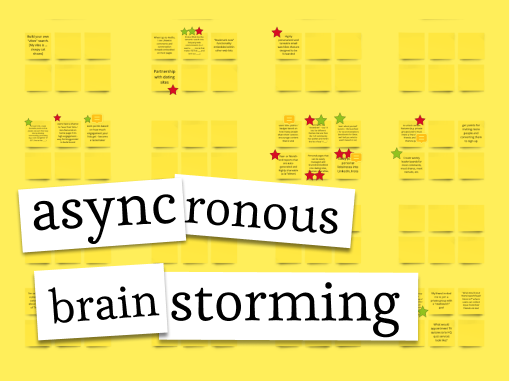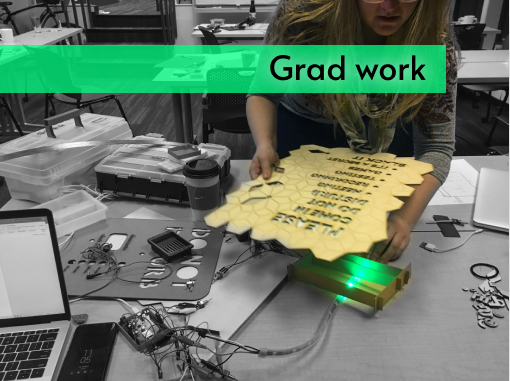Visualizing a job history dataset
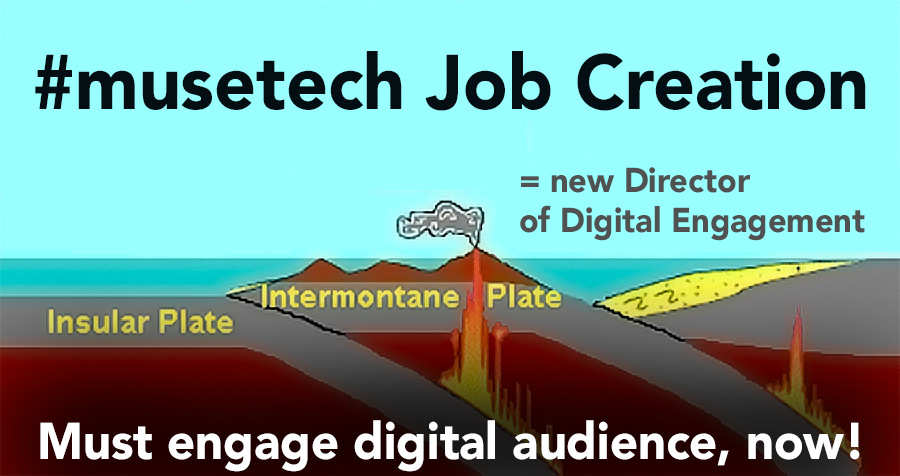
A #musetech job has never been an easy thing to find. They only emerge when enough institutional pressure builds up to break the surface.
The Job Description History Project team spent this summer hunting not for one museum technology job, but for hundreds. By scraping historic records, we aim to understand the evolution of these positions over time. You can learn more about our process from Desi Gonzalez’s inaugural project post.
Our team has pulled together several collections of job titles and descriptions. But mining data is always a messy affair. The datasets we’ve amassed each have their own special inconsistencies. Sample sizes and source types fluctuate. There are conspicuous holes within the 50-year timespan. As we begin to plot these varied findings in relation to each other, how do we analyze data that defies easy comparison?
I’ll take poetic license to describe the first of several datasets that we’re analyzing for this project as “a sample of MCN-affiliated job titles.” Job titles before 2016 were drawn from the Museum Computer Network’s official archives at the Smithsonian Institution Archives. Team member Nicole Riesenberger dug into these resources and recorded job titles that were relevant to museum technology. Her sources included the journal Spectra (published from the mid-1970s to 2002), membership directories, conference speaker and attendee lists, and publications. Data from 2016 had a different source, as we were able to snag all job titles from MCN2016 conference attendees. (Consequently, 2016 boasts over ten times more job titles than any earlier year.)
This data is not a complete sample—it’s a group of islands in an ocean of missing information. We can’t directly compare our findings from one year to the next. I grappled with this uneven distribution by focusing on the moments when #musetech terminology broke the surface and appeared in job titles. First, I crunched all job titles down into individual vocabulary terms (like collection, technology, and information). Next, I charted the emergence and disappearance of these terms throughout time. In what year did web first pop up in one of these job titles? Which terms were brand new in 2016, and which disappeared after the 1990s?
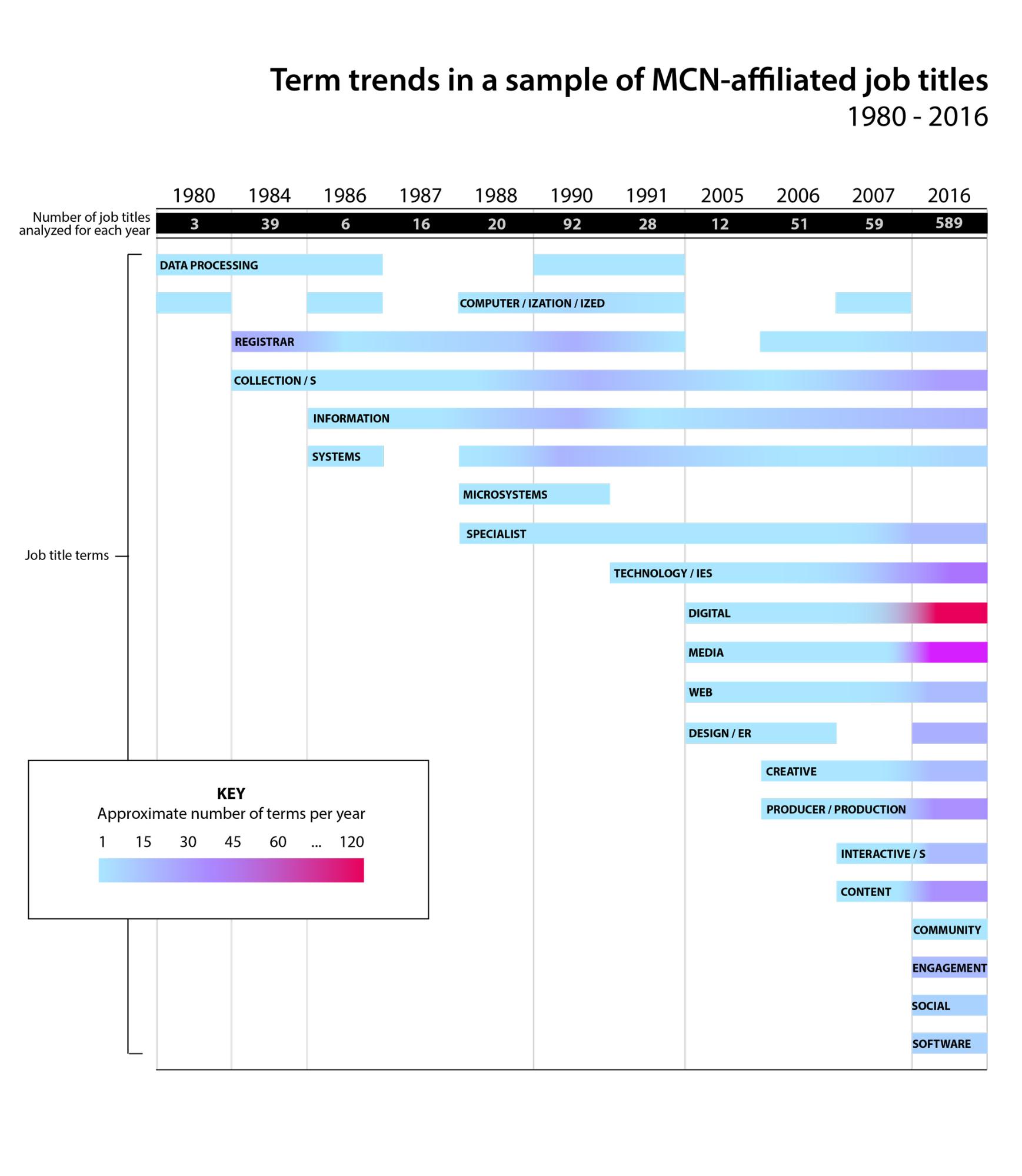
For this chart, I selected a handful of the terms that shed light on trend shifts in the museum technology field. In order to be included, terms had to emerge or disappear from the dataset; they couldn’t appear in every year. Terms also needed to trend up or down over time, relative to the total number of titles analyzed on given years.
For example, the terms registrar and specialist featured contrasting trends. In 1984, fifteen out of 39 job titles included the term registrar; but only five of 589 would do so by 2016. The term specialist didn’t break the surface until 1988; yet it appeared in twenty-three job titles by 2016. Taken as statistics, these trends don’t hold water—but they do map the outlines of a story. I like to imagine the pioneering registrars of 1984 gathering new technical savvy for their institutions. These enterprising tech generalists would have paved the way for the tech specialists of 2016.
The chart also shows how job title terminology shifted toward media, content, and the creative or production process over the last twenty years. Terms like community, engagement, and social were introduced in the last ten.
More patterns begin to suggest themselves. Data processing in the ‘80s led to effective information systems in the ‘90s. Web exploration in the ‘00s set the stage for digital content expertise. The recent explosion of social media gave museums the tools to connect with individual audience members, and supported the even more recent rise of user experience as an expertise.
The further that GLAMs specialize in applications of technology, the more we’ve trended toward audience outreach. In her 2007 blog post Hierarchy of Social Participation, Nina Simon described “collective social action with content” as the highest level of museum experience design. Many of today’s freshest #musetech roles serve this goal. From networking objects, we’ve expanded to networking humans.
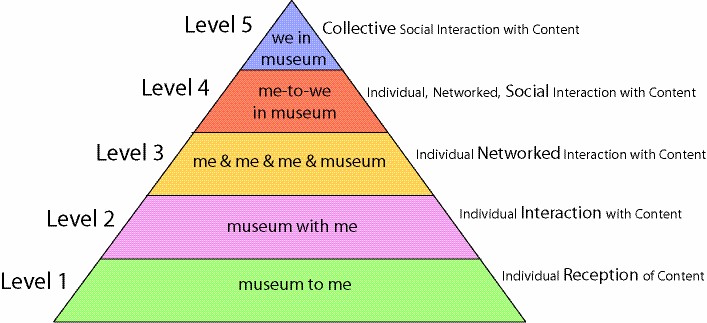
What #musetech will the generalists of 2017 build into new institutional expertise? Could today’s focus on digital wayfinding and building experience lead to future job titles like Visit Personalization Specialist or Gallery Intelligence Coordinator?
But even as new technology roles emerge, there are some baselines we can count on. Consider the Computerization Coordinator who went to the MCN conference in 1980, and the Digitization Coordinator who went in 2016. Museums will always need staff to convert objects into data.
At least—until the objects get smart enough to catalogue themselves.
More on process
